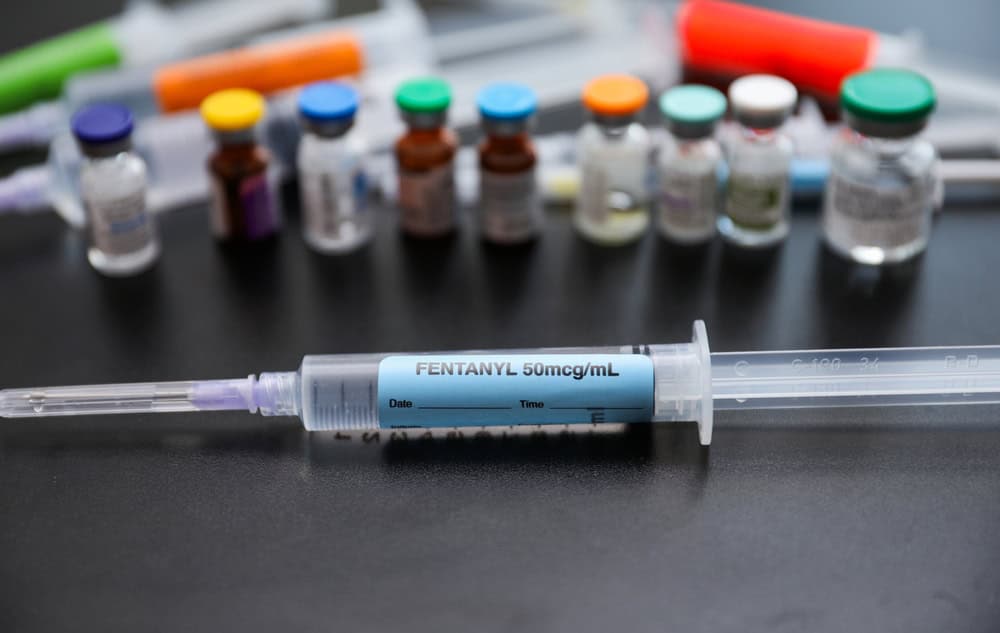


The 2022 provisional data showed that over 68% of the reported 107,081 drug overdose deaths in the US involved synthetic opioids other than methadone. According to the CDC, illicitly manufactured fentanyl was the primary driver of these deaths, accounting for nearly 73,654 of all overdose deaths. Fentanyl deaths have increased every year since 2012. In addition, fentanyl analogs like carfentanil, furanylfentanyl, and acetylfentanyl are being detected more in overdose deaths.
Not since the HIV/AIDs crisis has the US faced a lethal and devastating public health issue as the current opioid crisis. More people die each year of drug overdoses than died in the entirety of the Korean War, Vietnam War, or any armed conflict since WWII.
Synthetic opioids are a class of powerful and man-made drugs designed to replicate the effects of natural opioids, such as morphine and heroin. These substances are chemically synthesized in laboratories, and they differ significantly from natural opioids due to their artificial origins and, most notably, their potency.
The potency of synthetic opioids is a defining and devastating characteristic. Fentanyl, for instance, is estimated to be between 50 to 100 times more potent than morphine. Carfentanil is estimated to be 10,000 times stronger than morphine. Such extreme potency means that only a minuscule amount of the drug is sufficient to produce a powerful effect. This, in turn, significantly amplifies the risk of overdose.
Fentanyl is not a newcomer to the opioid scene, as it has legitimate medical uses for pain management. However, the illicit production and distribution of this drug have exacerbated the opioid crisis significantly. The clandestine production of fentanyl, often mixed with other drugs like heroin or cocaine, poses an enormous risk to users who may unknowingly ingest a lethal dose.
The unpredictability of synthetic opioids further compounds the dangers. Street drugs laced with these substances may not be uniform in composition, leading to variability in strength and effects. This makes it difficult for users to gauge the risk accurately, and even experienced individuals can inadvertently consume a lethal dose.

The opioid overdose epidemic in the United States can be divided into three distinct waves, each marked by different factors and substances involved.
The first wave of the opioid overdose epidemic began in the 1990s with the increased prescribing of opioids, particularly prescription painkillers. During this period, there was a surge in the prescription of opioids, including natural and semi-synthetic opioids like oxycodone and hydrocodone, as well as methadone.
Overdose deaths involving these prescription opioids began to increase during this time, with a notable rise since at least 1999. This wave was primarily driven by the overprescribing of opioids for pain management.
The second wave started around 2010 and was marked by rapid increases in overdose deaths involving heroin. This shift was partially a consequence of the first wave. As the medical community and authorities began to recognize the overprescribing of prescription opioids, efforts were made to reduce their availability, which led some individuals to turn to heroin as a cheaper and more accessible alternative.
This wave was characterized by a surge in the use of heroin and its associated overdose deaths.
The third wave began in 2013, with significant increases in overdose deaths involving synthetic opioids, especially illicitly manufactured fentanyl. Illicit fentanyl, which is much more potent than heroin and prescription opioids, became a primary driver of overdose deaths.
The market for illicitly manufactured fentanyl evolved, and it started to appear not only on its own but also in combination with other drugs, such as heroin, counterfeit pills, and cocaine. This made drug use riskier as users often didn't know what substances were in the drugs they were consuming.
This wave was marked by the rise of synthetic opioids, particularly illicit fentanyl, and their association with a substantial number of overdose deaths.

There are numerous origins and types of opioids in the market, which makes it hard for the authorities to detect, let alone regulate, these drugs. Let’s explore the reasons behind the detection challenges and regulation difficulties surrounding opioids.
Illicit manufacturers of synthetic opioids continually alter the chemical structures of these drugs to evade legal restrictions. This "cat and mouse" game with law enforcement makes it difficult to keep up with the constantly changing landscape of these substances.
The internet has become a major distribution platform for synthetic opioids. Dark web marketplaces and online sales have made these drugs accessible to a global audience, rendering traditional law enforcement and border control methods less effective.
The lack of regulatory oversight on the production and distribution of synthetic opioids contributes to their proliferation. Many of these drugs are manufactured in unregulated facilities, making it nearly impossible to ensure quality control or safety.
The existence of analog substances compounds the difficulty of regulation. Even when specific synthetic opioids are banned, analogs with minor chemical variations can emerge, circumventing legal restrictions.
Behind the statistics and headlines are real people, families, and communities affected by the synthetic opioid crisis. Lives are shattered, and the social and economic costs are immense. The opioid epidemic has created a public health crisis of unprecedented proportions.
There is a need to increase public awareness about the dangers of synthetic opioids. Educational campaigns can inform individuals about the risks associated with these drugs, making them more cautious and informed when confronted with them.
Harm reduction strategies and the distribution of naloxone (a life-saving opioid overdose antidote) are vital steps in reducing the harm caused by synthetic drugs. Safe injection sites also provide a controlled environment for users to minimize risks and seek support.
Above all, preventive measures like prescriber education, monitoring prescription practices, and improving access to addiction treatment can go a long way in combating the synthetic opioid crisis.
The opioid epidemic has exacted a heavy toll on individuals and communities. While efforts to raise drug awareness, prevent overdose, and regulate these potent substances are critical, they must be accompanied by robust rehabilitation and treatment options to help those already affected.
Substance abuse is a medical condition, and treatment and rehabilitation options are essential. Rehab programs can provide the necessary support for individuals struggling with synthetic opioid addiction. But it’s equally important for the stakeholders to reduce barriers to treatment, such as cost or location. This will improve the likelihood of individuals seeking and continuing treatment.


